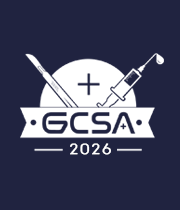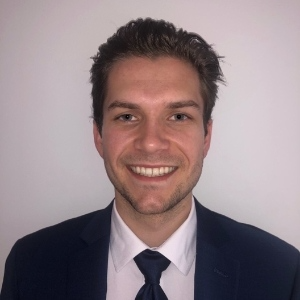Title : Assessing physiologic stress in outpatient surgery with local anaesthesia
Abstract:
Outpatient surgery often depends on local anaesthesia to prevent physiologic stress and pain during procedure. However, local anaesthetic injectionand surgical procedure may still act as a stressor for patients. In the current study, we explore the physiologic status of patients undergoing outpatient surgery at a Mohs clinic through blood pressures at multiple timepoints and continuous heart rate via Apple Watch.
Methods: Blood pressure was measured by standard sphygmomanometer at 5 timepoints: at baseline, before local anaesthetic injection (2% lidocaine with epinephrine, 1:100,000), after the first stage of surgical procedure, and 5-10 minutes following the previous measurement. Heart rate was measured continuously by an Apple Watch. Repeated Measure Analysis of Variations (RM-ANOVA) and post hoc t-tests tested significance for systolic pressure, diastolic pressure, pulse pressure, and mean arterial pressure. Mathematica was used for analysis and visualization of continuous heart rate data. This was an IRB-approved study conducted in an academic dermatology clinic.
Results: Through RM-ANOVAs, we found a significant effect of time from before through after surgical procedure on diastolic pressure and moving average pulse pressure. Systolic pressure was elevated above 140 mmHg on average without significant change throughout. For diastolic blood pressure, statistically significant differences were found between baseline and before injection (p = 0.003), between baseline and after stage 1 (p = 0.005), and between baseline and 5-10 minute later (p = 0.002). For the calculated pulse pressure, the only time point that had a statistically significant difference was between baseline and after stage 1 (p = 0.04). For the calculated mean arterial pressure, significant differences were found between baseline and before injection (p = 0.04) as well as between baseline and 5-10 minute later (p = 0.01). In the minutes following injection, there was an average increase in heart rate change over time following an overall sinusoidal pattern. After stage 1 of Mohs micrographic surgery, we found a significant decrease in blood pressures.
Conclusion: Our study demonstrates a heightened physiologic state before injection, an immediate sinusoidal response of heart rates to local injection, and a reduction of physiological stress following the completion of the first stage of outpatient surgery. We found larger moving-average pulse pressure changes before injection and after stage 1, which is consistent with our understanding that injection and Mohs surgery are the two physical stressors in our study. No significant average differences in blood pressure were found between before and after injection, suggesting that the stress of the local anesthetic event did not quickly dissipate the physiological anticipation and response to the local injection. Our findings are useful for clinicians to understand the specific timing of when patients experience a sympathetic response during MMS. Since we found that cardiovascular change increases in the period preceding injection and remains heightened through the first surgical stage, we conclude that interventions should focus on preventing this increase in physiological response.
Audience Take Away Notes:
- From the Apple Watch data graphs, they will understand that the dynamic change in heart rates dependent on the individual patient – promoting individualized care
- By understanding a model of how to use wearable technology to advance patient care in the futur
- They will be able to know when to focus their care for patients with cardiac conditions, which warrant close monitoring of cardiovascular status during outpatient surgical procedures
- List of other benefits:
- Not all outpatient surgical clinics, such as in Mohs surgery, measure patient physiology at multiple timepoints. This work reminds current outpatient surgeons of the dynamics of patient physiology surrounding surgical procedure in addition to the surgical procedure itself
- This work expands the current field of stress from Mohs surgery or other outpatient surgeries by providing multiple timepoints of measurement
- This provides information that calls for a focus on preventing or at least minimizing patient stress. By informing the audience on where physiologic stress occurs in outpatient surgery – which is not just the surgery itself – providers are better equipped to provide patient care cognizant of patient status



